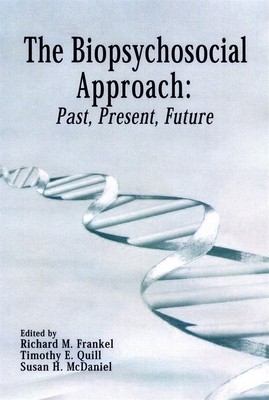
- We will send in 10–14 business days.
- Publisher: University of Rochester Press
- ISBN-10: 1580460615
- ISBN-13: 9781580460613
- Format: 15.2 x 22.4 x 1.8 cm, minkšti viršeliai
- Language: English
- SAVE -10% with code: EXTRA
The Biopsychosocial Approach: Past, Present, Future (e-book) (used book) | bookbook.eu
Reviews
Description
For thousands of years, Western culture has dichotomized science and art, empiricism and subjective experience, and biology and psychology. In contrast with the prevailing view in philosophy, neuroscience, and literary criticism, George Engel, an internist and practicing physician, published a paper in the journal Science in 1977 entitled "The Need for a New Medical Model: A Challenge for Biomedicine." In the context of clinical medicine, Engel madethe deceptively simple observation that actions at the biological, psychological, and social level are dynamically interrelated and that these relationships affect both the process and outcomes of care.
The biopsychosocial perspective involves an appreciation that disease and illness do not manifest themselves only in terms of pathophysiology, but also may simultaneously affect many different levels of functioning, from cellular to organ system to person to family to society. This model provides a broader understanding of disease processes as encompassing multiple levels of functioning including the effect of the physician-patient relationship.
This book, which containsEngel's seminal article, looks at the continuing relevance of his work and the biopsychosocial model as it is applied to clinical practice, research, and education and administration.
EXTRA 10 % discount with code: EXTRA
The promotion ends in 23d.06:45:32
The discount code is valid when purchasing from 10 €. Discounts do not stack.
- Publisher: University of Rochester Press
- ISBN-10: 1580460615
- ISBN-13: 9781580460613
- Format: 15.2 x 22.4 x 1.8 cm, minkšti viršeliai
- Language: English English
For thousands of years, Western culture has dichotomized science and art, empiricism and subjective experience, and biology and psychology. In contrast with the prevailing view in philosophy, neuroscience, and literary criticism, George Engel, an internist and practicing physician, published a paper in the journal Science in 1977 entitled "The Need for a New Medical Model: A Challenge for Biomedicine." In the context of clinical medicine, Engel madethe deceptively simple observation that actions at the biological, psychological, and social level are dynamically interrelated and that these relationships affect both the process and outcomes of care.
The biopsychosocial perspective involves an appreciation that disease and illness do not manifest themselves only in terms of pathophysiology, but also may simultaneously affect many different levels of functioning, from cellular to organ system to person to family to society. This model provides a broader understanding of disease processes as encompassing multiple levels of functioning including the effect of the physician-patient relationship.
This book, which containsEngel's seminal article, looks at the continuing relevance of his work and the biopsychosocial model as it is applied to clinical practice, research, and education and administration.


Reviews